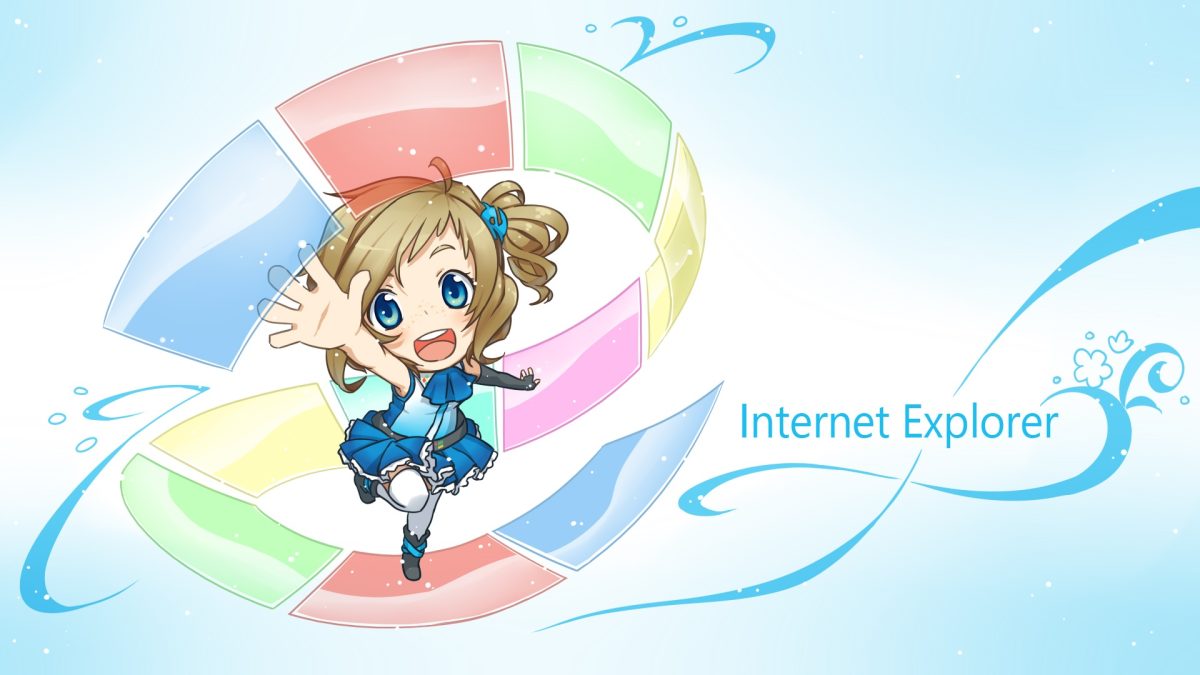In 1995m Microsoft launched the first version of Internet Explorer, a browser that would soon dominate the market but would also be infamous for its speed (lack thereof) and vulnerabilities. Sadly for Microsoft, their brow
ser’s reputation has stuck with them over the years as users switched to alternatives such as Mozilla Firefox or Google Chrome. While Internet Explorer initially dominated the market, it’s lost its spot to Google Chrome. Microsoft couldn’t sit by and let its competitors walk all over them, at least not in Japan.
Surprisingly, the most used browser in Japan is Internet Explorer. With IE losing out to other browsers in other countries and declining market share, Microsoft may be looking to reinforce their remaining strongholds. Japan has a unique modern visual culture, and Microsoft has adapted its marketing strategy to match. This past Wednesday Microsoft revealed a mascot character for Internet Explorer: Inori Aizawa. She’s essentially an anime-style personification of Internet Explorer and comes complete with a commercial, wallpapers, and matching homepage. She’s not the only character that Microsoft has; Microsoft has a bunch of anime-style mascots for different products and services. Windows 7 in Japan for example, was supported by Nanami Madobe. The launch of Windows 8 and RT in Japan saw two new characters: Yu Madobe and Ai Madobe. Platforms and services like Windows Azure, Silverlight, and Virtualization have their own cute personifications as well.
You’d think with a cast like this, Microsoft could start their own anime and get into the animation business, but they are great examples of Microsoft’s promotion adaptation. Promotion adaptation is changing advertisement to fit with different markets, in this case anime characters for Japan’s visual culture. It’s pretty funny to see a big corporation use cute little mascots to advertise their products and services. From a company that’s typically viewed as “outdated” or not knowing what they’re doing, it’s reassuring to know that Microsoft is doing something right in at least one market.
Fun ads aside, how well is Microsoft doing? In the industry they’re in, it’s important to be able to adapt quickly to their environment. Microsoft has largely been known for being a bureaucratic company, slow to move products and react to its environment. Remember Zune or Kin? Both products were born from excellent ideas, but introduced late and never gained enough traction to actually impact the industry. Besides that, since the introduction of Windows Phone, Microsoft has been slowly restructuring and rebranding their company. They’re pushing for a single unique interface across their device range, and while the interface redesign is controversial, it’s instantly recognizable and a defining feature of their products.
The newest and cutest mascot for Microsoft’s staple browser is nothing new from Microsoft Japan. They’ve characterized products and services to appeal to the Japanese market and they’re doing a decent job at it. That brings the question of how well they’re doing in other markets when some of their heavily advertised products fail or don’t grow fast enough, such as Zune and Windows Phone. I think one of the biggest reasons for Microsoft’s varying hardware success was their internal corporate structure. They were slow to react and slow to push, which are awful traits in the highly evolving consumer electronics industry, but with the introduction of Windows Phone, they’re slowly changing. Microsoft may have been a bit slow for a decent part of the 2000’s, but they’re looking to be a pretty fun and cute company now.
Alberto Vergara



































